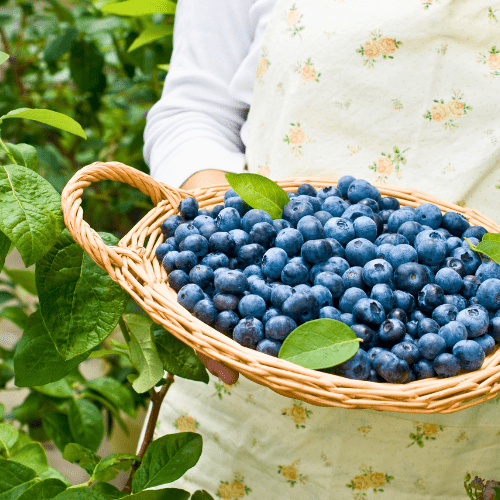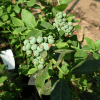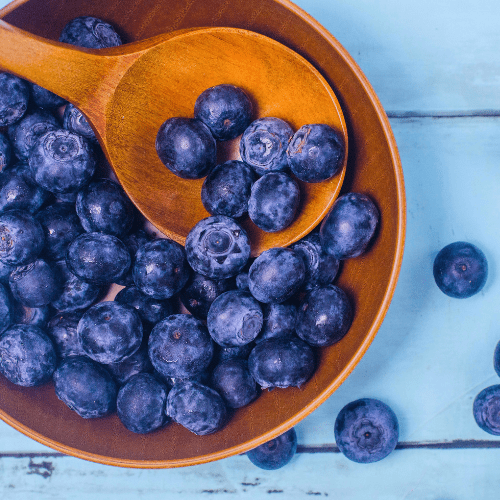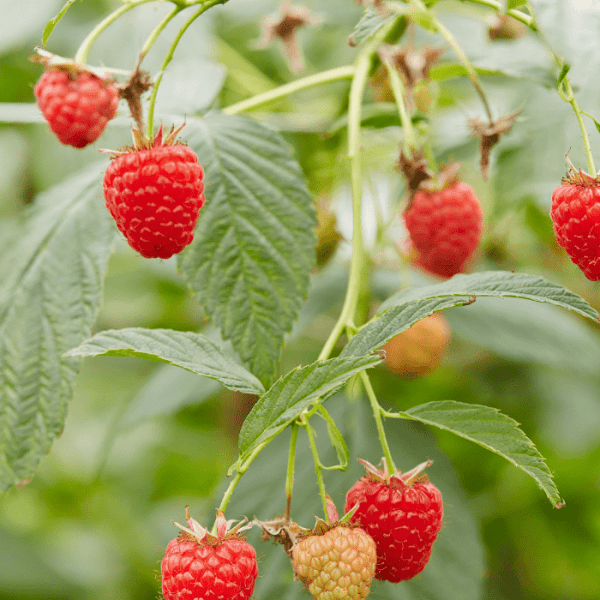Below is the planting information for Blueberry plants and a link to a step-by-step video on planting our Cranberry plants, which is the same for Blueberries
Step-by-step picture video on how to plant:
Position
Blueberries do best when in full sun and are protected from the wind. They will survive in a little shade. If you have more than one blueberry bush, plant them together in a patch near to one another.
Size
A mature blueberry bush can be between 1 metre to 2.4 metres in height, with a spread of about 1.5 metres.
Soil Type
To survive, your blueberries must have well-draining acidic soil with a pH between 4.2 and 5.5. It should retain moisture but never become waterlogged. Under these conditions, they can produce delicious fruits for 30 to 50 years.
Whether planted in a pot or in the ground, your base soil is one bag of acid compost mixed with any other soil—potting soil for containers and compost or your garden soil in the ground.
Create a mixture of one bag of our blueberry mix, one bag of pre-soaked Lithuanian peat moss and a bag of volcanic rock dust. Put this into the pot or 50 x 50 x 50 centimetre hole. Remove your plant gently from the 19 centimetre pot without disturbing the roots. Then, place it into the mixture at the same depth as in the 19cm pot to ensure that the crown is not covered and the roots are not exposed. It should be level with the ground.
Before planting, add your soaked peat moss, Berry Mix, and volcanic rock dust close to the surface. Planting too high or too deep stresses the plant and threatens its long-term health.
Mulch
Blueberries thrive when organic pine bark mulch is used to retain moisture and prevent weeds.
Apply 1 teaspoon of our slow-release high nitrogen all-plant fertiliser, every 4-5 months. The roots will absorb what they need.
Watering – For the first two or three weeks after planting your blueberry bush, give it between 2 and 5 litres of water per week (unless there’s been rain). Once it is established, you can water it well every third day. Never allow the soil to dry out completely. If it has dried out (perhaps in extremely dry conditions), give it a slow, gentle soaking.
Fertilising
Only fertilise your plant every 6 months with our slow-release fertilizer. Use compost of old vegetable and fruit peels to add excellent nutrients to your soil and keep it acidic. Do not fertilise with manure, worm tea or coffee grounds as they are too intense for blueberries.
Use our slow-release nitrogen-rich fertiliser, like our berry fertiliser Apply 1 teaspoon of our berry fertiliser every 4-5 months.
Pruning
These delightful little berries grow on the short side shoots produced during the previous year’s spring and summer. So, be sure not to cut these off. Top the bush to encourage more side branches and prune when it is about 5 years old. The best time to prune is in winter; only the dry branches and branches that have borne much fruit during the season need to be cut.
Harvesting
Different varieties of blueberries ripen at different times of the fruiting season. There are early-season, mid-season, and late-season varieties. So, choose a variety from these blueberry types to get the most out of your plants. This will extend the fruiting period of your harvest by a few months.
Step-by-step picture video on how to plant:
Don’t rush to pick the berries the moment they turn blue. Rather, wait a few days. They are perfectly ripe when they readily fall off the twig and into your hand.








